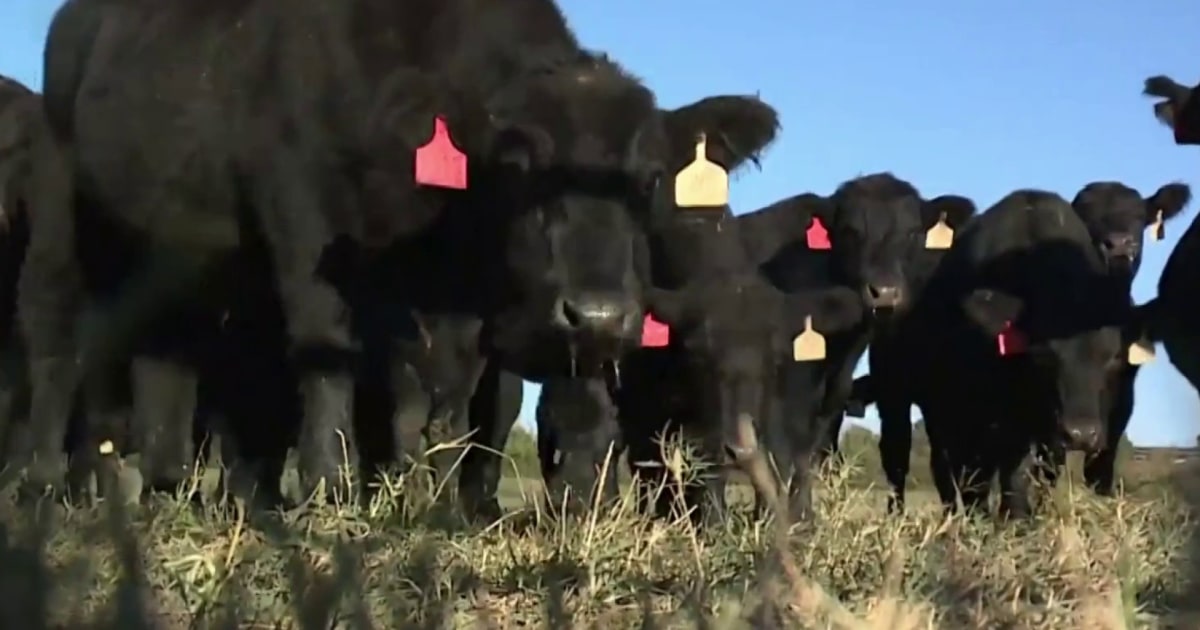Business
Beef Prices Reach All-Time Highs as Trump Proposes Imports

Beef prices have surged to unprecedented levels, prompting President Donald Trump to propose a plan to import beef from Argentina. The goal of this initiative is to alleviate the financial burden on consumers at grocery stores across the United States. As of October 23, 2025, retail beef prices have reached record highs, exacerbating concerns among shoppers.
The proposal has sparked significant backlash from cattle ranchers who argue that increased imports could undermine the domestic beef market. Members of President Trump’s own party have also expressed reservations about the plan, citing potential negative impacts on American farmers.
Concerns about the implications of importing beef from Argentina center on the quality and safety of the product. Many ranchers fear that lower-priced imports could flood the market, resulting in reduced profits for domestic producers. The National Cattlemen’s Beef Association has voiced strong opposition, emphasizing the importance of supporting local ranchers and maintaining high standards for food safety.
In light of these developments, President Trump has defended his plan, asserting that it is a necessary step to combat rising grocery prices. He highlighted that consumers are feeling the pinch, and his administration is committed to finding solutions that benefit American families.
According to NBC News correspondent Christine Romans, the tension surrounding this issue reflects broader concerns within the agricultural sector. Ranchers are adamant that importing beef could jeopardize their livelihoods, particularly as they navigate a challenging economic landscape.
As discussions continue, the impact of rising beef prices on consumers remains a pressing issue. For many families, the cost of groceries is a significant part of their monthly budget, and any potential relief from importation may be offset by the long-term consequences for local ranchers and the agricultural economy.
The situation highlights a complex balance between consumer needs and the viability of domestic agriculture, raising questions about the future of the beef industry in the United States. As the administration moves forward with its proposal, stakeholders from all sides are closely monitoring the developments that could shape the market in the months to come.
-

 Health5 days ago
Health5 days agoRare Brain Condition Discovered More Common in New Mexico
-

 Politics6 days ago
Politics6 days agoPrince Andrew Steps Back from Royal Duties Following Epstein Memoir
-

 Entertainment6 days ago
Entertainment6 days agoTrump Commutes George Santos’ Sentence, Sparks Controversy
-

 Sports6 days ago
Sports6 days agoMLS Decision Day 2025: Playoff Spots on the Line as Teams Clash
-

 World6 days ago
World6 days agoYoung Driver Dies in Collision with Box Truck in El Cajon
-

 Science6 days ago
Science6 days agoIdaho State University Launches Haunted Science Laboratory on Oct. 25
-

 Politics6 days ago
Politics6 days agoNavy Veteran Max Quattromani Launches Campaign for Assessor Seat
-

 Lifestyle6 days ago
Lifestyle6 days agoKent Hamilton Named Southeastern Farmer of the Year at Expo
-

 Sports6 days ago
Sports6 days agoSaquon Barkley Reacts to James Franklin’s Dismissal from Penn State
-

 Health6 days ago
Health6 days agoRemembering Mary Ingleby: A Life of Love, Teaching, and Music
-

 World6 days ago
World6 days agoHamas to Return Additional Hostage Remains on Friday
-

 Business6 days ago
Business6 days agoFirst National Bank of Groton’s Quiet Period Ends October 21









